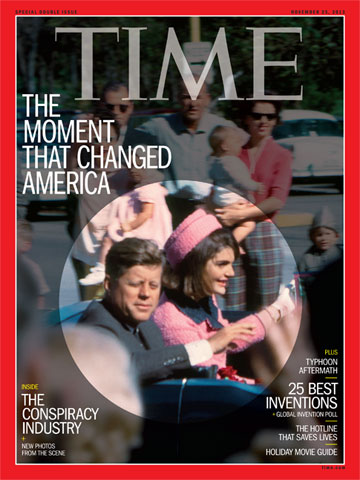
(7 of 8)
Access to this extraordinary record has resolved nothing, however. People see in it what they choose to see. Some clearly see Kennedy being shot from behind, while Garrison and others have seen the fatal bullet arriving from in front. Some see Kennedy and Connally reacting simultaneously to the "magic bullet" that the Warren Commission concluded must have hit them both. Others see them struck by multiple shots. One theorist has seen the driver of the limousine shoot the President with a chrome pistol. Another claims to see Connally himself shooting Kennedy--never mind that the governor was already grievously wounded.
The documentary and eyewitness record has been equally open to interpretation. Though the amount of material available to scholars of the assassination has grown tremendously over the years, this glut of information has done little to resolve the mysteries. The Warren Commission's report filled 26 volumes, but that was not enough. A decade later, many more revelations came to light during the Senate's Church Committee investigation into the CIA and FBI. These were, in many cases, deeply disturbing disclosures and proved that government agents were neck-deep in potential coups and assassination plots around the world during the years leading up to Kennedy's murder. Suggestive, yes, but still not enough.
In 1979 a special committee of the House of Representatives released still more material in support of its conclusion that Oswald did not act alone. This finding by an official government body made headlines around the world; I met a group of farmhands in the French Alps in 1984, miles from the nearest village, and when we tried to make conversation in spite of the language barrier, I easily understood the gist of their most urgent question: Did la Mafia kill Kennedy? And still there was more--some 4 million pages of material released in the 1990s after Congress created an Assassination Records Review Board with a mandate to let in the sunlight. The respected Kennedy-assassination investigator Jefferson Morley is among those for whom this is not enough. Morley is suing the government for records relating to an agent with possible ties to Oswald.
Bullet fragments have been tested and retested. Photographs have been digitized and enhanced. Staticky recordings have been electronically analyzed, and two-dimensional images translated into three-dimensional computer models. Witnesses have come forward with new or altered testimony. Year after year, the assassination record grows. Every now and then, an author will step in to say, Enough--as if anyone could put an end to this endless yearning for something more. The case is never closed.
It seems, however, that conspiracy theories rise and fall according to the passions of each new era. Early conspiracy theorists homed in on Cuban exiles and the CIA, for theirs was a period aflame over the fate of Castro's Cuban revolution. The Bay of Pigs fiasco in 1961 had been followed by the Cuban missile crisis of 1962. In his last December alive, Kennedy met in Miami with prisoners captured at the Bay of Pigs and promised that their brigade flag would fly in a free Cuba, but by then many anti-Castro activists had concluded bitterly that the President would do nothing to make that happen.
